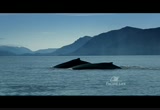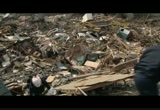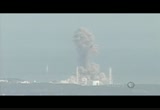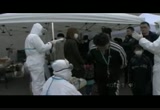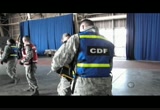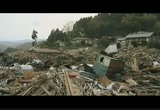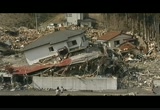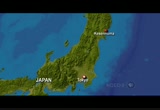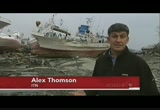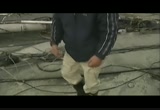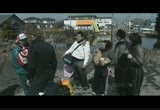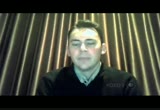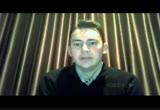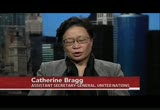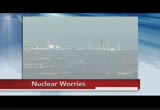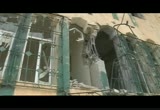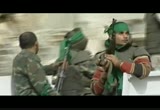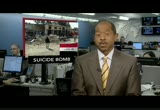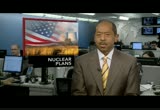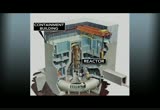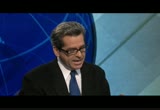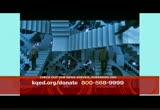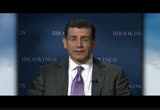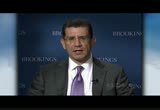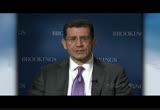tv PBS News Hour PBS March 14, 2011 6:00pm-7:00pm PDT
6:00 pm
captioning sponsored by macneil/lehrer productions >> ifill: new video reveals the extent of the catastrophe unleashed by friday's earthquake and tsunami in japan. officials estimate the death toll could exceed 10,000, as the nation struggles with a mounting economic, nuclear, and humanitarian crisis. good evening. i'm gwen ifill. >> suarez: and i'm ray suarez. on the newshour tonight, we have on the ground reports from several towns on japan's northeastern coast, where the search for survivors continues. >> ifill: we update the international rescue effort aimed at getting food, shelter, and medical help to victims. >> suarez: and we talk to newshour science correspondent miles o'brien and radiation
6:01 pm
expert david brenner about the state of japan's nuclear reactors. >> ifill: plus, margaret warner examines saudi arabia's military move into neighboring bahrain after a weekend of protests. >> ifill: that's all ahead on tonight's newshour. major funding for the pbs newshour has been provided by: breathe in. breathe out. as volatile as the markets have been lately, having the security of a strong financial partner certainly lets you breathe easier. for more than 140 years, pacific life has helped millions of americans build a secure financial future. wouldn't it be nice to take a deep breath and relax? your financial professional can tell you about pacific life, the power to help you succeed. >> you can't manufacture pride, but pride builds great cars.
6:02 pm
and you'll find it in the people at toyota, all across america. chevron. we may have more in common than you think. and by bnsf railway. and by the bill and melinda gates foundation. dedicated to the idea that all people deserve the chance to live a healthy, productive life. and with the ongoing support of these institutions and foundations. and... this program was made possible by the corporation for public broadcasting. and by contributions to your pbs station from viewers like you. thank you. >> ifill: thousands of bodies of earthquake and tsunami victims washed up today in northeastern japan. the confirmed death toll was
6:03 pm
near 1,900, but there were estimates of more than 10,000 dead in the miyagi region, hardest hit by the catastrophe. meanwhile, survivors struggled to find food, water, and shelter as engineers labored to prevent a nuclear disaster. four days into the disaster and the devastation is almost beyond words. and spreads as far as the eye can see. whole towns, gone. in their place, mounds of wreckage. today new images emerged capturing the moment friday's tsunami ripped through a residential area. the amateur video was taken by people who ran to high ground after a warning. from there they watched in horror as the enormous tidal wave swept through, uprooting trees and houses. video from off the coast showed a giant wall of water leveling the town.
6:04 pm
residents had 11 minutes to reach higher ground after warning sirens sounded. in the aftermath, the hunt for survivors continued with many of the homeless still searching for their loved ones. >> my relatives and friends are missing after the tsunami destroyed the village. they were all washed away. >> ifill: there was also escalating fear over a nuclear plant that lost its cooling system. a second hydrogen explosion rocked the nuclear station in fukushima, sending a huge cloud of smoke and steam into the air. 11 workers were hurt. on saturday a similar explosion tore through a different reactor building at the same plant. fuel rods in one were fully exposed at least twice today, and authorities continued dumping in sea water to cool down the nuclear core. in vienna, the head of the international atomic energy agency said the situation is
6:05 pm
unlikely to turn into an all-out crisis. and japanese officials said the containment shell surrounding both reactors remained intact with no evidence of widespread radiation exposure. >> it is true that irradiated materials which are not of a level that can cause harm to humans are moving within limits. there is no need for unreasonable worry. i think people should respond calmly. >> ifill: at the same time 22 people tested positive for contamination. three of them with serious exposure. others waited patiently as medical teams in head-to-toe protective suits used geiger counters and hand held scanners to check for radiation. nearly 200,000 people have been evacuated to temporary shelters. >> the town's response was way too slow. that's why things have ended up this way. >> they said it was safe and there was nothing to worry about. i trusted them completely. >> ifill: off shore the
6:06 pm
aircraft carrier u.s.s. ronald reagan moved farther out to sea after three of its helicopters flew into a low- level radiation plume 60 miles from the coast. but even without the radiation worries, there are still growing concerns over shortages of water, food, and power. closer to the quake's epicenter, grocery stores remained shut. >> family and friends are all gathered together in one house. now we're running out of food so i'm starting to worry. >> ifill: there were long orderly lines to red cross water tankers to dispense drinking water while lines for gasoline stretched city blocks. the stations that still had supplies were limiting drivers to the equivalent of $2 worth of fuel. financial markets were rocked as well by a broad sell-off today amid fears of economic fallout. the widespread power shortage have halted production at toyota plants and other factories around the country. meanwhile, the japanese government has sent 100,000
6:07 pm
troops to lead the relief effort. and at the government's request the u.s. sent two 75- person urban search-and-rescue teams each with six dogs trained to detect live victims. president obama again stressed the u.s. commitment today. >> i've said directly to the prime minister of japan that the united states will continue to offer any assistance we can as japan recovers from multiple disasters. >> ifill: overall more than 90 nations have offered japan assistance. 15 of them are expected to send rescue crews within the next few days. >> suarez: the scope of japan's suffering is being told in towns that dot the coast, and each has its own story of loss without reckoning. one such place is rikuzentakata, where james mates has the first of a series of reports from independent television news. >> reporter: this is the town of rikuzentakata. your eyes will tell you
6:08 pm
something very different because rikuzentakata, home just 72 hours ago to almost 30,000 people, has been wiped from the face of the earth. the tsunami came, destroyed everything in its path, and then took much of what it had destroyed back out to sea. the rest it left heaps and splintered almost nothing built by man or spared. what happened here is almost beyond description. it seems that an entire town, a thriving coastal community, has been picked up, and then dumped a mile or so up the valley from where it started. i'm standing on what i think is the piece of wall, but it is on top of cars. they are on top of bits of roof. we know that all this happened within an hour or so of that first earthquake. it doesn't bear thinking about how many people would not have had time to get away. these are people who rarely show emotion in public, but stoicism at this time is too
6:09 pm
hard. they search through the lists of names posted on boards in evacuation centers of those who are known to be safe. across the room survivors have posted handwritten messages on walls asking family, friends, former neighbors, to get in touch if somehow they have made it. in a school gym, the homeless of rikuzentakata wait patiently for evacuation. there will be no going home. >> my family is mother and sister and me, but my mother lost. >> reporter: your mother is lost? >> yes. >> reporter: i'm very sorry. these people lived because they were out of town as the tsunami struck or because they got lucky in the scramble to escape or because they happened to live on higher ground, like this family. >> it was a large earthquake,
6:10 pm
she told me, but where we were we felt safe. when i looked down i saw the roads in town were jammed with cars and that's why i think there were so few survivors. >> reporter: as we've been filming inside the evacuation center rescue workers have recovered another body from the debris. they have long since given up searching for survivors here finding the dead and preventing the spread of disease is all they're concerned with now. one of the first to be reached but perhaps the hardest hit of all. the town where 10,000 are still unaccounted for. they have now found a thousand bodies here. ambulances making regular trips in and out today to collect them. another thousand have been recovered from the shoreline nearby. every day there are aftershocks. with each one the threat of a new tsunami. today an alert from japan's meteorological agency sent rescue workers and police scurrying to higher ground. a change in wind direction and an all clear on the tsunami
6:11 pm
alert allowed us to leave. as we left we found a person standing on the concrete foundations of what had once been his house. his family was okay, he told us. we had a vehicle waiting and a hotel to go to. he no longer had a possession in the world. >> ifill: alex thomson has our next report. he's just down the coast in the fishing port of kesennuma. much of the town and its central business now lie in ruins. >> reporter: the port of kesennuma this afternoon. the cries of distant crows, the loudest noise that you can hear. the town's giant tuna fishing fleet stranded where the ebbing tsunami had left them,
6:12 pm
all over this town. people are coming back here. they can't quite take it in. last friday afternoon minutes before the tsunami, the town's tuna fleet weren't anywhere near here. they were at anchor right out in the bay. but the damage done to the tuna fishing industry and these vessels is as nothing compared to the damage in some ways that was inflicted by the boats and the tsunami right here. suddenly there's a man running through the rubble looking for his lost father. then we find his dad. his house, where? there's just a puddle. but it turns out this was his house.
6:13 pm
>> and what was this? what was this? >> my house. >> reporter: a businessman looks like he's been crying for several days. he won't forget last friday. >> all at once this wave just came towards us. i've never seen anything like it. from down low like this, you couldn't outrun it. >> reporter: it must have been terrifying. >> quite terrifying. you felt your time had come. >> reporter: ships capsized, dumped across the town. many of them burnt out. at least one still smoldering. across the bay, helicopters are flying relays round the
6:14 pm
clock to deal with a forest fire on the island across the sound. the quakes ruptured every fuel tank for miles here starting intense fires, including this one now spreading across this island. this small tender, the only boat that is working to get the firefighters in and frightened residents out. this woman had been stuck there for three days, and the blaze is spreading. >> the only information we're getting is from relatives and the men on the island. they say people have been swept away and their houses are gone. >> reporter: while some towns are obliterated along this coast here it's an entire port, an entire sector of industry simple he'll taken out. and there is this person's grandchildren, two of the 14 who lived where now there's just a puddle, foundations and a stranded fishing fleet.
6:15 pm
>> suarez: in addition to the thousands of dead in japan, untold numbers are injured. angus walker is in ishinomaki, where a hospital is trying to cope with human suffering beyond imagining. >> reporter: four days on and they're still finding bodies. this was a small town 15 miles inland. an elderly man was taken away, and a sergeant told me his unit needed food and water. if the army needs supplies, what hope is there for anyone else? until friday, this was one of ishinomaki's quiet district hospitals. now camp beds fill the corridors. mainly the elderly who are suffering the most. look into the eye of this
6:16 pm
92-year-old woman. 26 when the atom bombs were dropped on japan, did she ever expect nature to match the destructive force of war? severe damage to the roads along japan's north eastern coast make it very difficult to get aid to the victims of this disaster. look at this. the force of the earthquake has flung pieces of tarmac like playing cards. 26-year-old, his wife and friends had just waded out of their village. he cradled his ten day old daughter. what's the name of the baby? >> lucky. >> reporter: lucky? she's lucky to be alive. first from japan i talked with casey calamusa in tokyo >> suarez: now, for more on the efforts to bring international relief to japan. catherine bragg is the assistant secretary general for the
6:17 pm
coordination of humanitarian affairs. casey, welcome. what do people need most right now? and can you get it to them? >> that's a good question. our assessment teams have basically found out that what's to be expected. the most needed items right now are food, water, temporary shelter, and clothing. >> suarez: what kind of physical footprint are we talking about for the places in the most dire need right now? it's been hard to get an idea of the size of the affected area that we're talking about. >> one of the things that perhaps isn't made clear is how difficult it is to even reach these populations that have been stranded and cut off now. the roads have been washed out. there have been cars turned over and washed on to the highways. trees have been uprooted and blown over. it's almost impossible in a lot of cases to get anywhere by car. you need to be air lifted in. >> suarez: it's still a pretty cold time of the year in northern japan. have people been finding places to congress congregate,
6:18 pm
to get out of the elements in the area where the destruction have been the worst. >> there have been community shelters opening up at churches and schools and community centers. so there have been mass evacuations to those areas where they've been staying. that's one of the things that world vision is working on as well in its initial distribution we brought in jackets for babies simply realizing how vulnerable they are to the cold. >> suarez: when people congregate is it easier to get them food and water? >> certainly. when you have a population that is spread out that will make it much harder to target them and reach them in mass numbers. in a sense that does help for the aid and the distributions that they are all in one place or gathered together. right now the challenge is simply getting to them and then also what we're going to do medium to long term. >> suarez: thanks a lot, casey. good to talk to you. >> thanks for having me. >> suarez: now to united nations efforts to bring international relief to japan. catherine bragg is the assistant secretary general for the coordination of
6:19 pm
humanitarian affairs. ms. bragg, has japan made specific requests for aid? what have they been asking for? >> japan is actually a very well prepared and well resourced country when it comes to disaster response. so they have the response effort very much in hand and have been doing heroic work in that respect. but there are certain areas where the united nations as a particular role to play. in the early days after a disaster like this, search-and-rescue is the most important part. and part of what we can do and what the japanese government has requested of the united nations is to help coordinate the international search-and-rescue teams that are coming into the country. at the moment, the government of japan has accepted such rescue teams from 15 countries. there are at least another 19 countries on standby status at the moment and at least
6:20 pm
another 40 others who have also offered to send search-and-rescue teams. the coordination of all of this is something that the united nations can do for the government and for the people of japan. the united nations also helps to put out the humanitarian information for the use of and for the information of anyone who is interested from a humanitarian point of view. so we have been putting out a situation report from saturday morning which is the second day after the earthquake. we have been doing a daily situation report. so that for any party so interested in the situation from a humanitarian point of view such as where the gaps are in terms of fulfilling the needs of the survivors, where... what are the extent of the evacuation.
6:21 pm
that can be found in the information products that we put out. >> suarez: earlier in the program it's been reported on several occasions how difficult it is to get around the country. with those international search-and-rescue teams, can you get your assets into japan? and into the affected areas? >> yes, they are. and part of what international search-and-rescue teams have to do is they have to be self-sufficient. so they will be bringing in all of their own equipment, including the search-and-rescue dogs as well. there are a number of dogs that are with the teams. and they will be beginning... they have been getting into the area and have been assisting with the search-and-rescue. the airport at the moment is gradually opening. >> suarez: is it made more complicated, your work, by the problems with the radiation?
6:22 pm
there have been several releases. people are being evacuated from affected areas. do you not only have to worry about that for the people you're going to help but for the rescue workers themselves? >> of course we are concerned just as everybody. we have to remember this is actually a triple level of disasters. we have both the effect of the earthquake. we have the effect of the after math of the tsunami. and now with the nuclear threat as well. so this is not like any other situations, comparable situations that we can think of. this is not like haiti last year, not even like the tsunami in 2004. so it is a bit of a different situation that we have to deal with. but at the moment our understanding is that the level of radiation is not to the level that is of concern
6:23 pm
yet, that we would be withdrawing aid workers from the area. we of course are monitoring the reports from both the government and the international atomic energy agency as to what is the level of risks? at this point our understanding is that it has not reached that level where we would be withdrawing humanitarian workers from the area. >> suarez: in many other disasters, if you locate affected people, stabilize them, help out, your work is done. but here with the threat of very large aftershocks and maybe subsequent tsunamis, do you also have to move them to some place where they're no longer vulnerable? >> most of those evacuated and the survivors are in evacuation centers, in about over 2,000 evacuation centers. as i mentioned before japan is a very, very well prepared country for this. this is the sort of disaster
6:24 pm
scenario that they have been rehearsing for years so it is true that both the rescue and the relief efforts are constantly being hampered by aftershocks and also tsunami warnings and the like. it is part of the context of how aid can reach the people. >> suarez: u.n. assistant secretary general catherine bragg, thanks for joining us. >> you're most welcome. my pleasure. >> ifill: coming up, more on the >> ifill: coming up, more on the status of japan's nuclear power plants; plus, saudi arabia sends troops into bahrain. but first, with the other news of the day, here's kwame holman. >> holman: libyan leader moammar qaddafi pressed his assault on rebel-held towns today. government planes carried out new air strikes on ajdabiyah, and the larger city of benghazi lay ahead. we have a report from bill neely of independent news. . >> reporter: qaddafi's men are on the road to benghazi, and
6:25 pm
the rebels are on the run. just days ago and for 100 miles around, this was in rebel hands. not anymore. qaddafi state television has been showing off his latest prize, the oil town. this complex provides electricity to the rebel capital benghazi. qaddafi could now cut its power. his men simply out-gunned the rebels, retaking the oil towns with artillery, tanks and planes, capturing 150 miles in days. the rebels say their retreat is strategic, and they had simply advanced too far too fast. the hospital was abandoned quickly. this is it just five days ago, filled with injured rebel fighters and with their dreams of freedom and of toppling qaddafi. the dreams, like the fighters, are gone. but the hospital is deserted.
6:26 pm
qaddafi's army spokesman says the reels are al qaeda terrorists. i asked him if he's now planning to attack benghazi. >> to deal with them you're going to need really a full- scale military action. >> reporter: but that's exactly what qaddafi does. this is zawayih just hours after it was taken. this is what benghazi can expect. qaddafi's onslaught is ferocious. one of his crack brigades in the vanguard dozens of troops sacrificed. dozens of civilians reported killed by indiscriminate fire. this town was bombarded for seven straight days by tanks, by artillery, by the very best qaddafi could throw at it. you can see burnt-out cars, rocket propelled grenade and bullet holes in the buildings here. zawiyah was crushed ruthlessly. qaddafi's men have benghazi in their sights. the revolution is on its knees.
6:27 pm
>> holman: government forces also used tanks to re-capture the small western town of zuwarah today. and at the u.n., the security council discussed imposing a no- fly zone, but reached no consensus. in afghanistan, a suicide bombing killed 35 people today at a military recruiting center. afghan officials said the bomber targeted a building in kunduz province. he blew himself up in the crowd outside. the taliban claimed responsibility. the group attacked the same recruiting site last december. security forces also were targeted in eastern iraq. at least ten iraqi soldiers died when a bomber detonated a car laden with explosives. it happened outside the headquarters of an army intelligence battalion, northeast of baghdad. at least 30 people were wounded in the bombing. the high court in lahore, pakistan, delayed a ruling today on whether an american jailed there has diplomatic immunity. raymond davis is accused of killing two pakistanis. he was working for the c.i.a. at the time. the immunity issue now goes to
6:28 pm
the trial court, set to convene on wednesday. the u.s. state department has lost its chief spokesman over the wikileaks case. p.j. crowley resigned sunday after saying the military's treatment of army private first class bradley manning was "ridiculous and counterproductive and stupid." manning is accused of leaking hundreds of thousands of documents. he's being held in solitary confinement. and at night, he was being stripped and made to wear a suicide-proof smock. the events in japan will not change u.s. plans for more nuclear energy. a white house spokesman said today, "it remains a part of the president's overall energy plan." but several european countries began reassessing. switzerland suspended plans to replace old nuclear plants with new ones, and germany delayed a decision on extending the life of its nuclear plants. >> we want to form an independent investigating commission with the task of undertaking a new risk analysis of all german nuclear power plants.
6:29 pm
this based on currently available information about events in japan, especially looking at the security of the cooling system. >> holman: at least 195 nuclear power plants are operating throughout europe. of 19 plants under construction in europe and asia, most are being built in russia. on wall street today, stocks fell amid concerns over the economic effects of the japanese earthquake and tsunami. the dow jones industrial average lost 51 points to close at 11,993. the nasdaq fell 14 points to close at 2701. president obama asked congress today to revamp the nation's main education law before the new school year begins in september. republicans and democrats agree that "no child left behind" needs revising, but they disagree on the federal role in education. the president said he wants changes to support innovation and target more funding on schools where students are doing poorly. those are some of the day's major stories. now, back to gwen.
6:30 pm
>> ifill: we take a closer look look now at some of the questions raised about the state of japan's damaged nuclear reactors. i'm joined by newshour science correspondent miles o'brien and david brenner, director of the center for radiological research at columbia university. welcome. miles, i'll start with you. what is typical? what is supposed to happen and what is happening in japan right now. >> let's do a little bit of boiling water reactor 101. let's look at a little graphic here to help people understand. we've heard them talk about the fuel rods, for example. these are shafts of zir cone yum inside are little pellets of uranium encased in ceramic. those rods go inside this reactor primary containment vessel. that's the last line of defense. you don't want that ever to breach. we should be very clear that we have no inindication that those primary containment vessels at those three stricken plants, reactors in japan, have been breached at all. now what happens is these rely
6:31 pm
on water for cooling. these rods need to be bathed in water. when there's a seismic activity, when there's some sort of earthquake, something begins what's called a skram. interesting acronymn. it shuts down the plant in a quick manner. you need a... additional power, auxiliary power in order to keep the water over the fuel rods and keep them cool enough. the next line of defense is an important point as well. this has been breached in twos those two explosions. the reactor inside the primary containment vessel. then there's the secondary containment vessel. what happened in this case was there was venting of hydrogen into the secondary structure. take hindenburg for just a moment. a spark and an explosion occurs. that is where we've seen a very likely most of the release of the radioactive release of cesium and iodine. this comes from digital globe which gives you an idea. on the left-hand side of the picture that's one of the vessels which is still contained. in the middle you see one that
6:32 pm
has had the explosion because of the hydrogen which exploded. >> ifill: once again that's the roof and the walls but not the containment... not nuclear reactor. >> just to be clear. that primary containment vessel remains intact. that's very important. >> ifill: when we talk about this kind of... we use the term meltdown very loosely as we talk about things like this. do we have any indication of the degree of damage that has been done when these rods were uncovered by water? >> i've talked to quite a few experts today. what they tell you is that some things have melted. the question, has the fuel itself melted? probably the rods. as a matter of fact there's no doubt about that. but has it reached the point where the fuel begins melting and becomes this molten mass which creates that scenario we've heard in the movies, the china syndrome. i don't know what you call it on this side of the planet. the cleveland syndrome or something. in theory it becomes so hot that it would melt its way out of this primary containment chamber. we haven't seen that yet but this is still a very tense time. they're pouring in sea water
6:33 pm
into these vessels as best they can to keep it cool. that means they've written off these plants. you'll never be able to use them again. the sea water is modulated with boron to make sure that neurons aren't active. that means the plants are a write-off. the question is can they continue keeping this sea water in at a proper level to keep the temperatures safe. >> ifill: is what we just saw in those pictures, is that we have here in the united states? is it the same kind of set-up? >> well, basically our struck truers are a little beefier than that. one important point which i should tell everybody is that the diesel fuel tanks for the auxiliary generators which keep the water pumping are all buried here in the united states. these tanks were above ground for reasons that a lot of engineers can't fully understand. this is, after all, a seismically active area. the ring of fire. japanese after all invented the term tsunami. the fact that they had fuel tanks of diesel to run these generators this last resort generator above grown has people mystified. >> ifill: without the power you can't keep it cool.
6:34 pm
that's the problem we're facing tonight. i want to turn to david brenner and ask for your assessment of how serious a situation is this potentially? >> well, it's very hard really at this point in time to give a clear answer to that question. we have some parameters that we can think about. there have been two major nuclear power plant disasters in the world. there was the one in this country at three mile island. there was the one at chernobyl in the old soviet union. just to put perspective on those two, chernobyl was the equivalent of a million three mile islands. so really the question is, are we closer to a three mile situation or are we closer to a chernobyl situation? >> ifill: what's the answer to that? >> i think the answer.... >> ifill: go ahead. >> i think the answer to that question is clearly we're closer to a chernobyl situation. if the event were to stop right now, i'm sorry... i said that exactly wrong. we're clearly closer to a three mile island situation.
6:35 pm
if the incident was to stop right now, the amount of radioactive release is really very small. and the risk to the general population, just like it was in three mile island, would be very small indeed. of course, we await.... >> ifill: pardon me. understanding that none of us know tonight exactly how much radiation may have been released we have heard some reports and we saw in some of the earlier taped pieces people being wanded and checked for irradiation exposure. do we know, do we have any sense about how serious that might be? >> i think we have a good idea at this point in time that the radiation exposure to the general public and i'm not talking about the nuclear power workers but to the general public at had point is clearly very small. the radiation risks course pondingly are very small. the issue with the nuclear power on the other hand the people inside the plant is very different. i think pretty good evidence that there have been in high-
6:36 pm
dose exposures to those folks. the folks who are actually fighting the situation inside. and are trying to get the water into the nuclear fuel. i think we know there are some high doses associated with those folks. so the general population so far i think that the doses are low. >> ifill: one of these reactors went online in 1971. is the age of the plant significant in this case? >> i think it is. i think it's actually key to the whole scenario. that's 40 years ago. the actual lifetime of this reactor was scheduled to be 25 years. and really what we see is, as you've just heard, the back-up system were really not as good as they should have been. and as time has gone on over the years, the newer plants have better and better and more and more back-up systems in place. this plant actually had only one back-up system. the secondary generators. when they failed there was nothing.
6:37 pm
and that's not the case with any modern nuclear reactor. so it is crucial that this was a 1971 machine. >> ifill: as we look over and watch this for the next several days and watch to see whether the cores cool down, what are we looking for? what should we look for to fiend out if things are getting better or getting worse? >> there are really two issues which are going to determine the public health significance. that's just how much releases we get in the next couple of days, and the other point actually is the wind. the wind is actually central here. which way is the wind going to below? among all the awful things that are happening here, the one bright sign is that the wind is actually blowing off shore. so the wind is actually taking whatever radioactive materials are being deposited in the atmosphere and moving them off shore to the sea. we very much hope that that
6:38 pm
continues and we continue have off-shore winds that are ameliorate the whole situation but it's the winds and how much radioactivity is actually admitted from these reactors. >> ifill: give me a best-case scenario and a worst case scenario. >> the best case is that in the next day or so they get the... they get enough water into the fuel, and there's very little more release than we have right now. then we're going to be in basically a three mile island situation where although there were releases they were so small that there was no good evidence of any public health risk to the surrounding population. that's the best case scenario. the worst case scenario is in fact that there is a significant radioactive release in the next couple of days. i think the next 48 hours is really crucial here. we still hope that most of the plume will get blown to sea
6:39 pm
but the worst case scenario is that the wind would change and the plume is starting to approach the population. which as you know has been evacuated some miles away now from the nuclear plant. but still the plume will reach the population if the wind is blowing in the right direction. >> ifill: of course. we'll be watching all of that, david brenner at columbia university, miles o'brien of newshour science correspondent. thank you both very much. >> >> suarez: this is pledge week on public television. we'll be back shortly with an update on the turmoil in bahrain. this break allows your public television station to ask for
6:46 pm
>> suarez: another dramatic turn in the revolts sweeping the arab world. margaret warner has that story. >> warner: saudi arabia and other gulf states sent at least a thousand troops and police and dozens of military vehicles across a cause way into bahrain today. the incursion followed a month of demonstrations and clashes in the persian gulf island kingdom as bahrain's majority shiites protest the two-century rule of minority sunnis. seven have been killed. on saturday defense secretary robert gates visited bahrain, home to the u.s. navy's fifth fleet, to tell its rulers they have to take more than what he called baby steps toward reform. the crown prince said he was trying to get all sides to engage in a dialogue. >> we know that a significant portion of the electoral base feels that their voice is
6:47 pm
unheard. and they want the respect due to them to be given to them by the opposition. they want to sit with them and talk to them. so, you know, at the end of the day we're all going to have to live in the same country together. we're all going to have to talk to each other s. >> warner: a coalition of bahrain's shiite-led opposition groups denounced the arrival of forces from the council calling it an occupation. white house spokesman jay carney said the u.s. does not consider today's move an invasion. he urged the bahrainy government to show restraint and begin talks with the protestors. for more on this move by the saudis and other gulf states we go to a former persian gulf military analyst at the c.i.a.. he's now research director at the center of the brookings institution. welcome. this is the first cross-border military move we've seen in response to any of these protests across the arab
6:48 pm
world. how shall we look at this? i mean is this an invasion or is this the saudis responding to a 911 call? >> well, of course, to some extent it depends on your per spekt itch. for the for the opposition it's an invasion. for the government of bahrain it is much needed support from an ally. i think what's important about it though is it does demonstrate the fear of so many of the regimes in the region. what they see is the tidal wave, pardon the current affairs pun, of democracy sweeping the nation, threatening their own regimes. what's been fascinating is is that the saudis, while they have internally embraced a program of reform over the past six years have been tremendously frightened by what they're seeing elsewhere in the region fearing that reform could turn into revolution which could sweep not only the bahrainees from power, the other gcc states, perhaps even themselves. >> warner: how much is driven by their fear of even having great shia participation or maybe a shia-led government as part of this arabian peninsula
6:49 pm
community. >> that's obviously a complicating factor for the saudis. it's always hard to know how much of this is that the saudis are fearful that any kind of successful revolution in the gulf could lead to a contagion effect in saudi arabia and how much of it is about the fact that saudi arabia's eastern province which borders on bahrain or is very close to bahrain separated only by a small strip of water is majority shia just as bahrain is. and overseen by a majority sunni population so that almost certainly is a major factor causing the saudis to say, you know what? we need to go in therein nip this thing in the bud. we need to snuff out any prospect for a real revolution in bahrain which could create problems for us. >> warner: now how engaged do you expect this force to become against the protesters? today there was no engagement between the two but the protests are strong and yesterday they beat back the riot police, the bahrainy riot police. could you see these gulf
6:50 pm
troops firing on bahrainy protestors? >> obviously one of the reasons that i think that the saudis decide to go in is that it is from their perspective important to demonstrate to the bahrainees that they're not going to allow this to go so far. protestors just like those in many other countries believe that their own army is unlikely to fire on them because the soldiers are of the same people. you introduce a foreign force and that element is absent. they can't be sure that the saudis won't fire on them. in fact they have to assume that they will. all that said, i think that the saudis also have to make a calculation. there almost certainly is a debate between saudi arabia as to whether or not they want to have their forces actually opening fire on bahrainy civilians. some of the more hard line elements in the kingdom may think this would have a palliative effect whereas the more moderate elements probably recognize this would create all kinds of problems for saudi arabia elsewhere in the region. >> warner: does this move by
6:51 pm
the bahrainees, the gulf states, the saudis, also represent a split with washington on how they should be responding to all these calls for reform? >> i think that this does illustrate the fact that the saudis in particular have a very different view of what's happening in the region. i think that one of the hardest things that washington has been dealing with is how to on the one hand welcome forces of democratic change in the region while simultaneously reassuring the united states more traditional conservative allies like saudi arabia, which while on the one hand being willing to reform internally itself has been extremely discontinue certained by these waves of revolution, these demands for much greater change elsewhere in the region. >> warner: finally, do you see any evidence yet that iran is trying to exploit this? or do you think that this move by saudi troops into bahrain will in some way invite that? >> my suspicion is that the
6:52 pm
saudis and the bahrainees both suspect that the iranians are deeply involved in what's going on. >> warner: washington says there's no evidence. >> but it's been a persistent pattern that bahrain in particular has tended to blame the problems between sunni and shia on iranian instigation. there have been time s when the iranians have been more involved but the best evidence that seems available is that this really isn't about iran. this really is about genuine shia and even wider bahrainy grievance against the government there. but i think that one of the other factors that probably is driving the saudis and the bahrainy government is their fear that even if the iranians haven't been behind it so far, the worst the chaos gets the more likely that iran will get involved. >> warner: kenneth pollack of the brookings institution, thanks a lot. >> my pleasure. thank you for having me. >> ifill: >> ifill: again, the major developments of the day. thousands of bodies of earthquake and tsunami victims washed up in northeastern japan, amid estimates of 10,000 dead.
6:53 pm
japanese engineers struggle to prevent meltdowns. libyan government forces attacked another town in their steady push to recapture the rebel-held east. and to kwame holman, for what's on the newshour online. kwame? >> holman: we have much more on the earthquake, including video and photos, a map of live seismic data, the science behind the damaged nuclear reactors, and a lesson plan for teachers on explaining tsunamis. patchwork nation previews paul solman's next report on income inequality in the u.s. that's on our making sense page. plus, on art beat, find our weekly poem. tonight, carol ann davis reads her work, "distal." all that and more is on our web site, newshour.pbs.org. ray? >> suarez: and that's the newshour for tonight. on tuesday, we'll have the latest on the devastation and the recovery efforts in japan. i'm ray suarez. >> ifill: and i'm gwen ifill. we'll see you on-line, and again here tomorrow evening. thank you, and good night.
6:54 pm
major funding for the pbs newshour has been provided by: >> oil companies make huge profits. >> last year, chevron made a lot of money. >> where does it go? >> every penny and more went into bringing energy to the world. >> the economy is tough right now, everywhere. >> we pumped $21 million into local economies, into small businesses, communities, equipment, materials. >> that money could make a big difference to a lot of people.
6:55 pm
moving our economy for 160 years. bnsf. pacific life-- the power to help you succeed. and by toyota. and by the alfred p. sloan foundation. supporting science, technology, and improved economic performance and financial literacy in the 21st century. and with the ongoing support of these institutions and foundations. and... this program was made possible by the corporation for public broadcasting. and by contributions to your pbs station from viewers like you. thank you. captioning sponsored by macneil/lehrer productions
456 Views
IN COLLECTIONS
KQED (PBS) Television Archive
Television Archive  Television Archive News Search Service
Television Archive News Search Service 
Uploaded by TV Archive on

 Live Music Archive
Live Music Archive Librivox Free Audio
Librivox Free Audio Metropolitan Museum
Metropolitan Museum Cleveland Museum of Art
Cleveland Museum of Art Internet Arcade
Internet Arcade Console Living Room
Console Living Room Books to Borrow
Books to Borrow Open Library
Open Library TV News
TV News Understanding 9/11
Understanding 9/11
